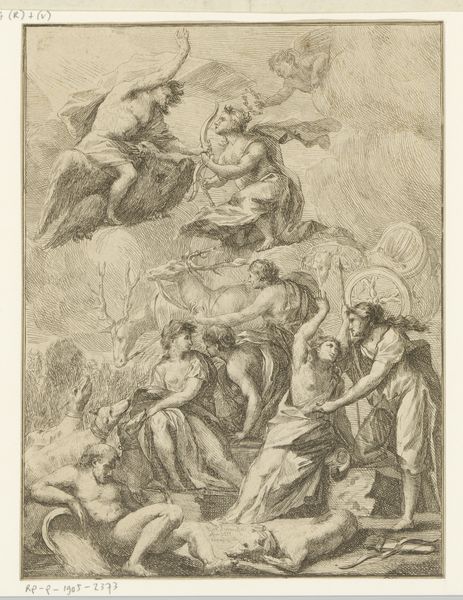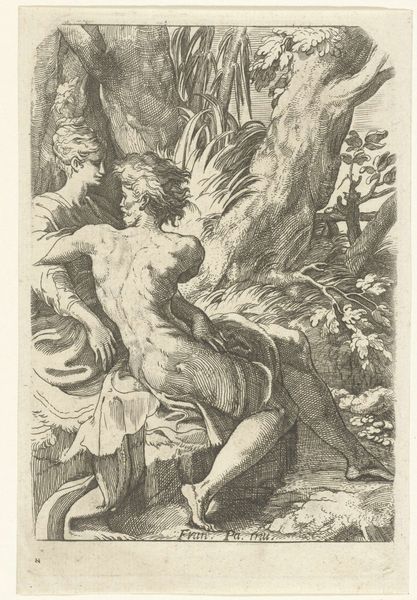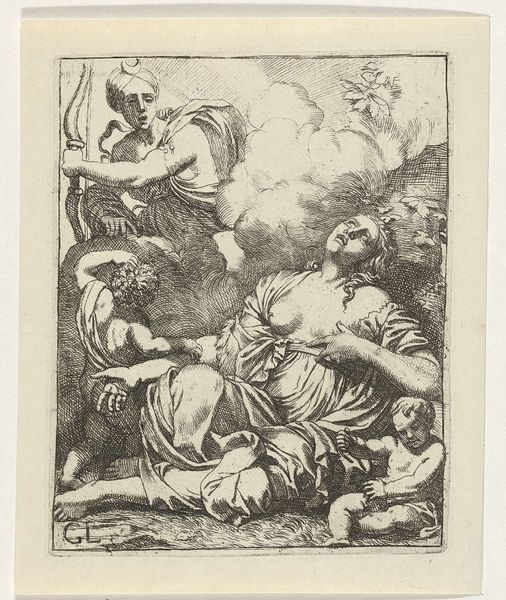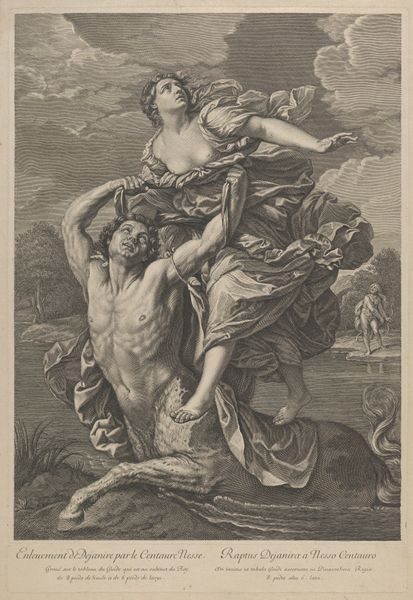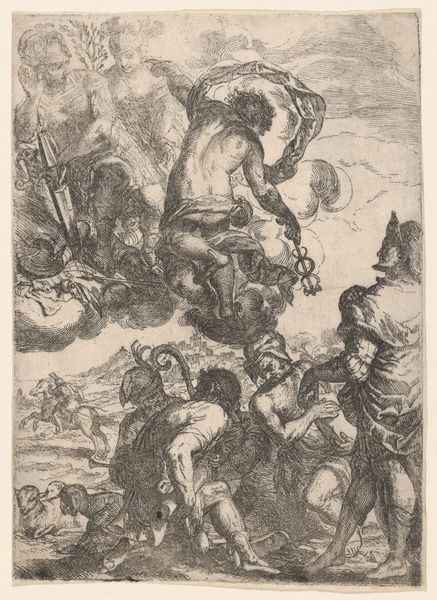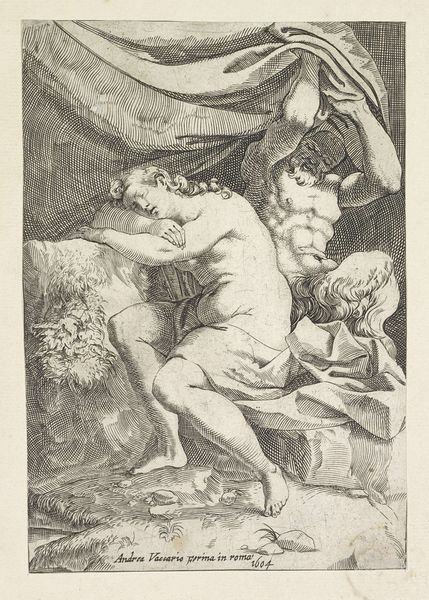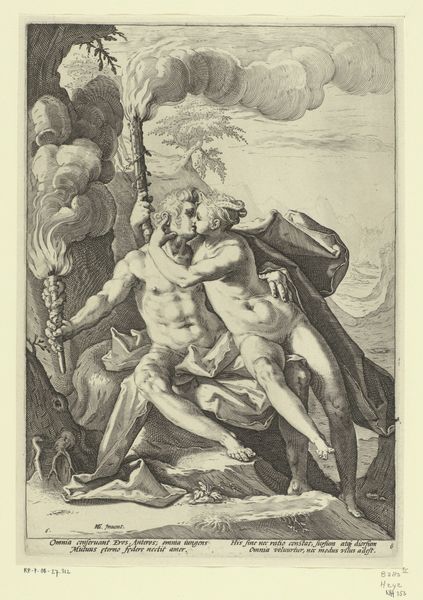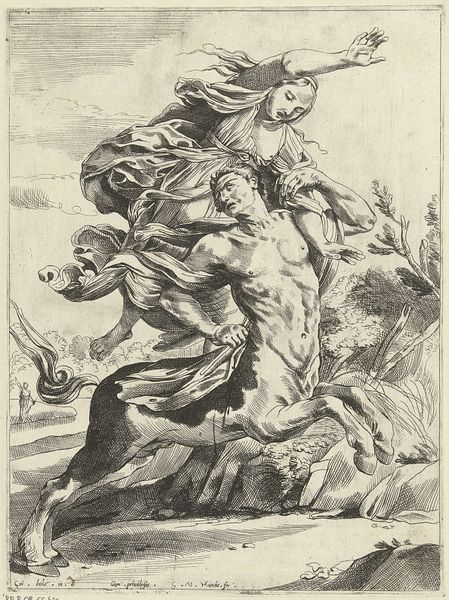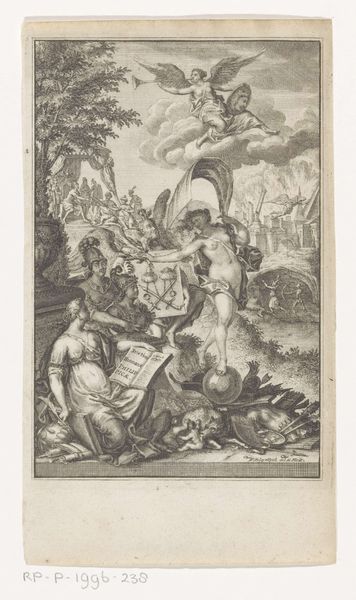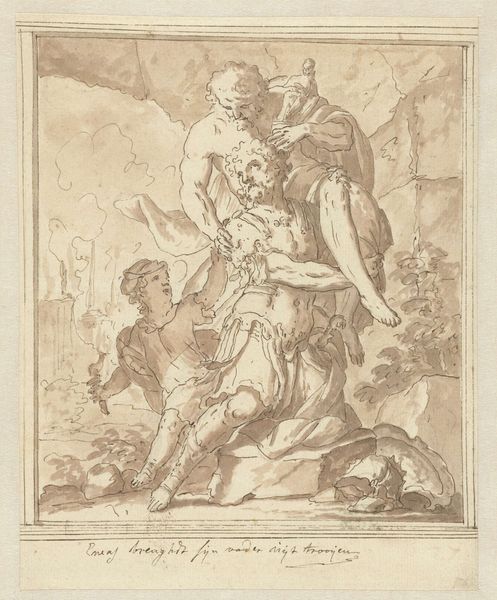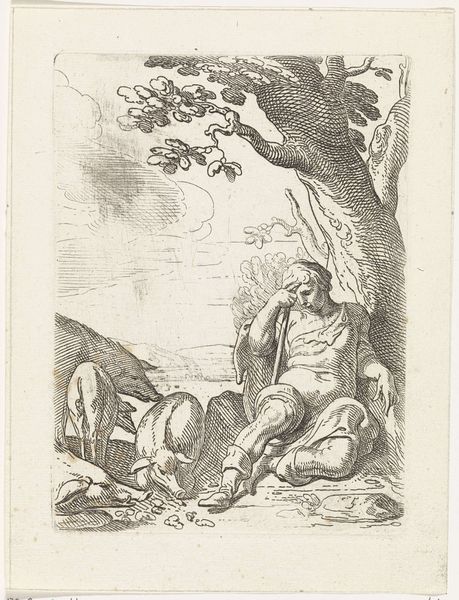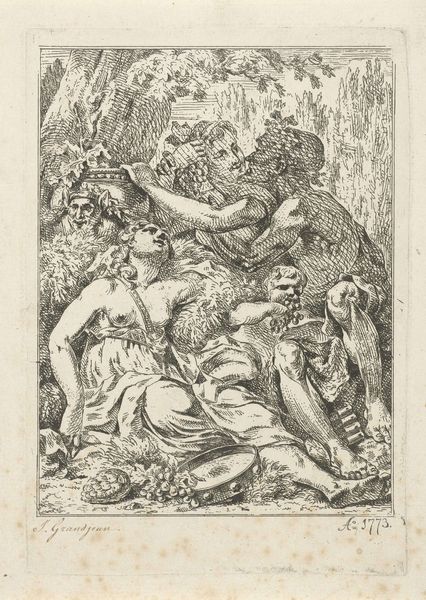
engraving
#
baroque
#
figuration
#
history-painting
#
engraving
Dimensions: height 181 mm, width 132 mm
Copyright: Rijks Museum: Open Domain
Editor: This engraving, "Maria Magdalena" by Johann Christoph Storer, dated sometime between 1621 and 1671, really strikes a somber note. The cross-hatching emphasizes the figure's anguish and repentance, while angels float above. How do you interpret this work, given its historical context? Curator: This engraving presents an intriguing opportunity to consider the historical construction of female sainthood and its implications. Baroque depictions of Mary Magdalene often leaned heavily on presenting a feminized archetype of contrition, repentance, and the rejection of earthly pleasures, often bordering on eroticized depictions of penance. Note the skull and discarded earthly goods. What narratives do you think are being reinforced or challenged here regarding gender and power through her portrayal? Editor: I suppose that its perpetuating a narrative of female sinners being redeemed through faith... almost implying that the female body is inherently sinful. Curator: Precisely! But consider also the socio-political environment. In post-Reformation Europe, the veneration of saints, especially female saints, was often used to reaffirm Catholic identity against Protestant critiques. How does framing Mary Magdalene as the ultimate repentant sinner perhaps serve to re-establish Catholic authority on female piety and submission? Editor: I never really thought about the religious conflict and the image of the female saint! Thank you! Curator: And I appreciate your insightful observation about the problematic depiction of the female body and faith, framing this as not just a devotional piece but a statement on the role of women in the social order.
Comments
No comments
Be the first to comment and join the conversation on the ultimate creative platform.
